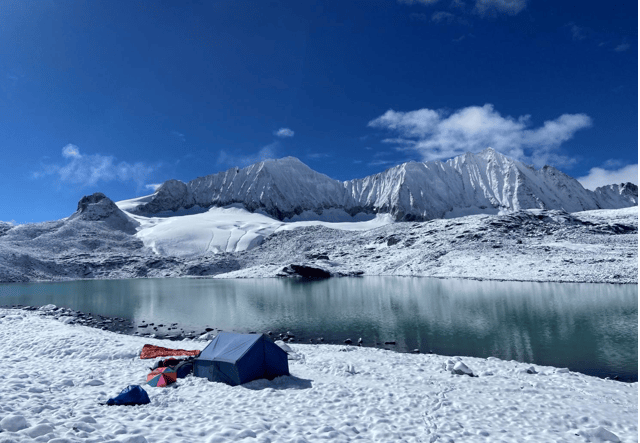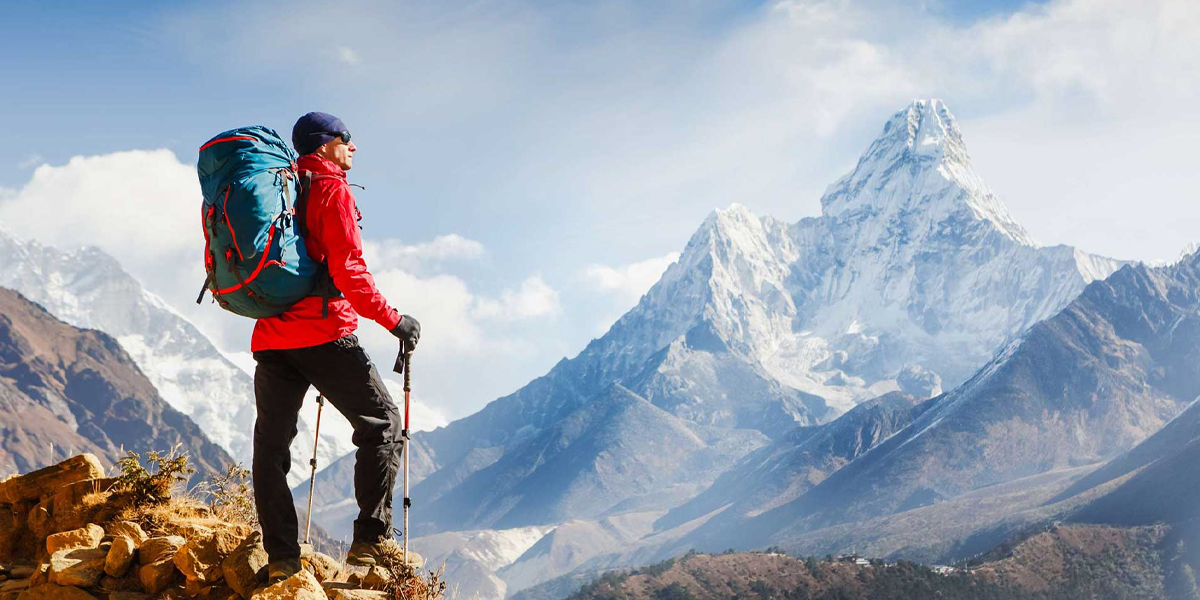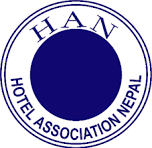Leading Trekking and Adventure Agency Since 1997




Choosing one of the toughest trek in the world as your trekking destination will give you exciting adventures and happiness. Were you can experience in the world. Snowman trek, with 30-40 people per year managing to reach both ends of the trek, we are a long way from the number of people summiting Everest annually. Trekking in the Snowman Trek region will reward with most beautiful and authentic untouched natural beauty and unforgettable experience. Most untouched landscape, settlements, tribes and mountains around will definitely fascinate you during your stay in Bhutan. Accommodations throughout your trekking journey in Bhutan are one of the most comfortable and luxurious arrangement in Bhutan. Hope Bhutan can give you once in a life time experience.
Arrival in ktm transfer to hotel and checking the equipment, shopping if any.
After having our early meal,and sightseeing Kathmandu durbar square, Swayambhunath stupa, Pashupatinath temple, and Boudhanath stupa are UNESCO world heritage sites that we explore till sunset. Overnight stay at the hotel in Kathmandu.
Morning arrival to Paro. Visit of Paro dzong, National Museum and town.
Program subject to time of arrival.
walk back down to the road on the way stop for lunch at the view point cafeteria and then walk further down to the road point.
Morning after breakfast drive to Drukyel dzong. This used to be a place where the trek started before. See ruins of the old dzong (castle) and continue further to military camp of Gunitsawa on the new built road. Possibility to make detour to Lhadi Gompa just before military camp. Firs Distance 16 km, 7-8 hours, 770 m ascent, 10 m descent, camp altitude 3,610 m. On this long day there is a lot of up and downs, mostly through the forest along the Paro chhu river. Finally, you will reach to large chorten on the junction, where you will need take trail to the left. After about half hour, you will reach to Thangthangtha campsite. The place is equipped with dilapidated toilets, kitchen house and caretaker's dwelling. If weather permits, you might glimpse the first great view of Jomolhari, best photographed right from the toilets. Camp is cold and It gets dark early.t night camping just above military camp at the elevation
of 2,890 m.
Distance 10 km, 5-6 hours, 480 m ascent, camp altitude 4,080 m. If you did not see Jomolhari peak in the evening, you still have a chance to get a great view this morning. The trek continues up the Paro chhu valley which widens into patches of alpine meadow and scanty growths of forest. You will cross an army checkpoint along the way and enjoy a spectacular view of high mountain ridges and snow-capped peaks. In this area yaks and their herder’s homes become a regular feature of the landscape. Passing the villages Soe, Takethang and Dangochang is another asset on this day. After reaching Jangothang, one of the most beautiful campsites of the Himalayas, you can enjoy most spectacular
view of Jomolhari over the ruins of ancient temple or fortress.
Today we will make beautiful acclimatization hike to Tshophu lakes in 4450 m altitude. Start going from camp further north along the few hamlets and then turn to the steep ascends towards the east. Finally, you will reach long deep valley hidden from below and see the two spectacular ice lakes hidden at it's bottom. Walk to the first or even second lake since it offers great views back towards the summits of Jomolhari I, Jomolhari II, and Jichu Drakye. Herds of blue sheep are also common sight. If you are strong, you can even continue to the Bonte-la pass (4850 m) but not further. The trail ultimately leads back to Gunitsawa after two days trekking (is so called Jomolhari Yaksa trek).
After enjoying the views around the lakes, descend back to Jangothang and have a good rest, making you ready for the next day.
Distance 13 km, 6-7 hours, 840 m ascent, 870 m descent, camp altitude 4,010 m. This is one of the longest days of the trek. A short distance from the camp the trail begins climbing rapidly for about half an hour and then becomes a gradual ascent to the Nyilila pass at 4870 m. Enjoy the beautiful surroundings, while climbing. You might see herds of blue sheep grazing on the slopes. From the pass, you will have spectacular views of Jomolhari, Jichu Drake and Tsherim Kang peaks. It's a gradual and long descent to the camp. On clear days, you will be welcomed with the spectacular view of the Lingshi Dzong on the heap of the hill. Finally,
descend to the valley. There are few suitable campsites here and your staff will select the most practical one given the actual conditions.
Distance 10 km, 4-5 hours, 280 m ascent, 410 m descent, camp altitude 3880 m. Today is the very short walking day so if you feel strong enough, you can make morning side trip north of the camp the lake Chhokam Tsho at 4340 m near the Jichu Drakye base camp. Side trip will add about 8 kilometers and 450 m both up and down and will take about 3 hours.
Otherwise, start walking from camp and to a junction by the white chorten. Here, you have the choice of staying on the main trail or taking a detour up to the Lingshi Dzong (4220 m), which sits right atop a high ridge. In addition to a very special atmosphere of mystic tranquility, Lingshi Dzong provides great views over the valley. After Lingshi Dzong, you will be passing the villages of Lingshi and Goyul. In Goyul, the stone houses are clustered together to form a small compact village that is unusual in Bhutan where settlements are usually scattered. On reaching the campsite at Chebisa, you will have plenty of time to visit the village houses if you feel up to it. There is also a beautiful waterfall located
behind the village that is worth visiting.
Distance 17 km, 6 hours, 950 m ascent, 640 m descent, camp altitude 4220 m. The morning starts with a long ascent behind Chebisa Village (2- 3 hours) over a wide pastureland towards Gobu La (pass). On the way, you might see a people herding yaks. There is also a great chance to spot large herds of blue sheep above the trail. After crossing Gobu La (4410m), you descend into the valley, then climb again a bit, before descending again to Shakshepasa (3980 m), the large flat valley. This place is possible campsite, but we might also continue with some extra
climb to Shomuthang campsite (4220m) in case the water is available there and your group is small
Distance 11 km, 4-5 hours, 500 m ascent, 760 m descent, camp altitude 4160 m. You begin by climbing up the valley to view Kang Bum (6526 m). After three hours of climbing you will reach to Jhari La (4750 m), from where you catch the first glimpse of Sinche La, the pass you will have to cross the day after. The big snow peak in the north is Gangchhenta 6840 m, better known as the Great Tiger Mountain. If weather is clear, Tsherim Kang and the top of Jomolhari will be visible. As the day trek is short, you might like to make climb to Jhari Peak adjacent to the pass in elevation of 4935 m for better views. Round trip will take you bit over a one hour. Descend to the herder's camp above the river which is called Tsheri Jathang, located in a beautiful wide valley. Herds of takin, the Bhutanese National Animal, migrate to this valley in summer and remain for about four months. The valley has been declared a takin sanctuary.
Climb up a bit further and you will finally reach your campsite at Robluthang on a rocky meadow
Distance 13 km, 6-7 hours, 850 m ascent, 870 m descent, camp altitude 4140 m. The trek starts out with an initial 40-60mins ascent before gradually raising for another one and half hours through the boulder field. It is then about one hour steep ascent before reaching Sinche La (5005m) – the final and highest pass on the trek. As you descend the far side of the pass you will see an impressive terminal moraine and a glacial lake at the foot of the valley. You can see classic examples of lateral moraines where the glacier has pushed rocks up both sides of the valley. Below the moraine, you cross the Kango Chhu creek and soon reach the
Limithang campsite. The peak of Gangchhenta towers over the campsite even though it’s quite a distance away.
taste local spirit called “ara” or other delicacies.
Distance 19km, 7-8 hours, 1,030m ascent, 750m descent, camp altitude 4,160m. From Laya we descend to an army camp and continue following the river till the turn off point to Rhoduphu. After lunch the climb continues through rhododendron bushes till you reach the camp at Roduphu just next to the Rhodu Chhu.
Distance 17km, 7-8 hours, 740m ascent, camp altitude 4,900m. After following the river for about half an hour you will have a steady climb to a high open valley at 4,600m and then further up to Tsomo La (4,900m). Tsomo La offers a superb view of Lunana, Mount Jomolhari and Jichu Drake, and the Tibetan border. The route then crosses a flat, barren plateau at about 5,000m. The campsite at Narethang is towered by the
peak of Gangla Karchung (6,395m).
Distance 21km, 6-7 hours, 300m ascent, 1,200m descent, camp altitude 3,970m. From the camp you will climb for about an hour to Gangla Karchung La (5,120m). The view from the pass is breathtaking and the whole range of mountains including Jekangphu Gang (7,100m), Tsenda Kang and Teri Gang (7,300m) can be seen. The pass descends along a large moraine. Again one has great views: a massive glacier descends from Teri Kang to a deep turquoise lake at its foot. Up here a glacial lake burst through its dam in the early 1960s, causing widespread damage and partially destroying Punakha Dzong. Finally, it is a very long descent through thick rhododendron to Tarina valley, where you will find several good campsites along the Tang Chhu. Anyway as this day is not particularly long, you will continue about 1 hour further to large boulder for camping. This place is called “Dead Man’s Camp” by the Bhutanese staff because the tourist did die on this place due to high altitude sickness. You should ba having good acclimatization though, so have no
worry. Your Bhutanese staff might be afraid of ghost though!
Distance 15km, 4-5 hours, 240m ascent, 330m descent, camp altitude 3,910m. The walk leads down through conifer forests following the upper ridges of the Pho Chhu, passing some impressive waterfalls. The trail then climbs over a ridge and drops to Woche after about 2.5 hour walk. This is settlement of a few houses, the first village in the Lunana region. The trail leading south-west is the fastest way to reach Punakha valley and is used by locals when they need to go to “civilization”. Spend some time to explore the village or visit a local shop. Afternoon continue some
1.5 hour the campsite by the Woche Chhu river side.
Distance 16km, 7-8 hours, 980m ascent, 1,190m descent, camp altitude 3,700m. This will be quite hard and long day. The trek starts through juniper and fir forests, and further ahead, through rhododendron bushes. Climb up to Keche La pass (4,650m) where one can have the great view of surrounding mountains again. After the pass, descend to the riverside walking through a village with a stunning view of Table Mountain and others. Follow up the river till Lhedi Village. Lhedi has a basic health unit and a school. Camp by the village.
Distance 14km, 6-7 hours, 450m ascent, camp altitude 4,150m. In clear weather, you will have great views of Table Mountain (7,100m). Around lunchtime you will pass the small village of Chozo (4,090m) which has a dzong still in use. Reaching Thanza again you will have a great view of Table Mountain which forms a 3,000m high wall of snow and ice behind
the village. Although there are possibilities to camp directly at Thanza, most groups prefer to camp in Thoencha.
8-9 hours, camp altitude 5,240m. Having chosen the route to Bumthang the trek starts by climbing a ridge with a great view of Table Mountain and Thanza valley below. The ridge altitude is 4,500m and it rises gradually up to 4,650m. After lunch, walk upwards towards the left side of the bridge to enjoy the view of snow-capped mountains. You reach the campsite of Tshorim after climbing more ridges. This the highest
campsite of the trek.
6-7 hours, camp altitude 4,970m. This is one of the highlights of the trek and the day starts with a short climb to the Tshorim Tsho lake, one of the most spectacular mountain lakes of Bhutan. You walk on the side of the lake enjoying a panoramic view of the Gophu La ranges. The last climb to the Gophu La pass (5,455m) is not long.. After the pass descend to the campsite, walking along the ridge to enjoy a great view of Gangkhar Puensum. If interested, one can divert to the left side to climb up the pyramid peak for a better view or you can go down to the camp nearby
Sha Chhu.
6-7 hours, camp altitude 4,500m. The trail further follows the Sha Chhu and descends gradually to Minchungang (4200m). Here the very steep climb starts which will take you Phrodhrang La pass (4660m). Below that, there is high campsite called Phrodhrang, which used by parties trekking in opposite way. Continue descending until you start again climbing to Sake La pass (4950m) reaching to summit approximately 2 hours after first pass. From here it’s about one hour to descend to Warathang (4520m).
4-5 hours, camp altitude 3,350m. Day starts with the short climb to Urathagn la (4,600m). After the pass, you have to undertake long and uncomfortable descend to the riverside through dense rhododendron, juniper and conifer forest. After the bridge a short climb leads to Duer Tsachu. These hot springs, where Guru Padmasambhava is supposed to have taken bath, might be the most stunningly beautiful hot springs of the Himalayas. You will be enjoy the afternoon bath to clean the sweat of
previous days!
8-9 hours, 1km, 1500m ascent, 700m descent, camp altitude 4,150m. Refreshed in hot springs, you begin last major climb of the trek. Mixed forest is changing to juniper one. It will take about 3-4 hours to reach the Gokthong-la pass (4420m). Descend below the pass and have a lunch.
After that, you will need to undertake 1.5 hour climb the Juli La pass
(4700m). This is good time to small celebration as it’s the last pass of the trek! Finally descend to the beautiful Tshochenchen campsite by the small stream
5 hours, 900m descent. Continue descending through mixed pine forest
until you reach road head at Dur village. Here the bus will be waiting you! Enjoy the refreshments, and tell proper goodbye to your trekking staff.
Then drive to Jakar and accommodate in the hotel after trekking!
Drive to Bumthang airport for Paro flight (35 mins’).
After early breakfast at the hotel, drive to the airport for flight to your onward destination. Our representative will help you with exit formalities and then bid you farewell
.png)
The Snowman Trek is one of the most challenging and rewarding high-altitude treks in the world, spanning the remote Himalayan mountains of Bhutan. It typically takes around 25-30 days to complete and covers over 200 miles.
The best time to undertake the Snowman Trek is during the pre-monsoon season (April to June) and post-monsoon season (late September to October). These periods offer the most stable weather conditions and clear skies.
Altitude sickness is a significant risk on the Snowman Trek due to the high elevations. It's crucial to acclimatize properly, stay hydrated, and ascend gradually. Our guides are trained to recognize and manage symptoms of altitude sickness.
Accommodation on the Snowman Trek includes camping in tents at designated campsites. Our support team will set up and manage the camp for you each day.
Trip Style: Trekking
Trip Duration: 27 Days
Accomodation: Hotel
Package: Snow Trek Bhutan
Note: Snow
Destination: Bhutan
Hotel Category: Guest House on Trekking
Max Altitude: 4950m/16335 ft
Min Pax: 3
Trek Type: Trekking
Meals: Nepali, Cotinental and Bhutanese
Trip Type: SNT
Grade: A
Highest Altitude: 16335
Trip Code: ST20
Duration: 27
Primary Activities: Trekking and Sightseeing
Arrival City: Kathmandu
Departure City: Paro
Transportation: International and Domestic Flights, Private Vehicle
Best Season: Mid June-Mid October





.jpg)
.jpg)
.jpg)
.jpg)
© 2025 Himalaya Kailash Travels & Tours Pvt. Ltd. All rights reserved.
Powered by: Nectar Digit
© 2025 Himalaya Kailash Travels & Tours Pvt. Ltd. All rights reserved.
